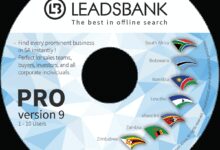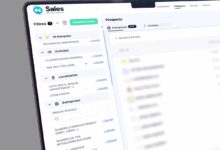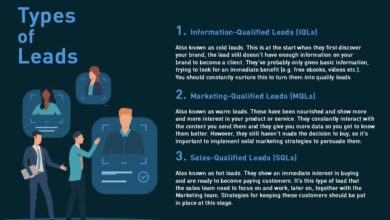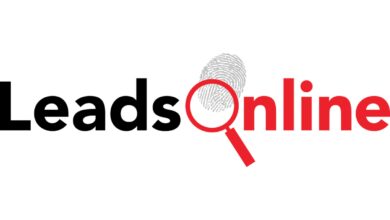Leads Meaning: 7 Powerful Insights You Must Know Now
Ever wondered what ‘leads meaning’ really is? It’s not just about names and emails—it’s the lifeblood of sales and marketing. Let’s break it down in simple, powerful terms.
Leads Meaning: The Core Definition and Why It Matters

At its heart, the term leads meaning refers to potential customers who have shown interest in your product or service. These individuals or organizations are not yet buyers, but they’ve taken a step—like filling out a form, downloading a guide, or subscribing to a newsletter—that signals intent. Understanding this concept is crucial because it forms the foundation of any successful sales funnel.
What Exactly Is a Lead?
A lead is more than just a contact. It’s a person who has engaged with your brand in a measurable way. According to Investopedia, a lead is “a potential sales contact”. This could be someone who clicked on your ad, attended a webinar, or followed your social media page. The key is interaction.
- A lead shows interest but hasn’t made a purchase.
- Leads can come from various channels: online ads, events, referrals, or content downloads.
- Not all leads are equal—some are warmer (closer to buying) than others.
“A lead is the starting point of every customer journey.” — HubSpot
Why Understanding Leads Meaning Is Critical for Business Growth
Without leads, there are no customers. Simple as that. Businesses that master the art of lead generation consistently outperform their competitors. A study by Salesforce found that high-performing sales teams prioritize lead quality over quantity. Knowing the true leads meaning helps companies focus their efforts on attracting the right people—not just any people.
- Improves targeting accuracy in marketing campaigns.
- Enables better resource allocation in sales teams.
- Increases conversion rates when leads are properly nurtured.
Types of Leads: From Cold to Hot – What You Need to Know
Not all leads are created equal. The leads meaning evolves depending on where a prospect stands in the buyer’s journey. Categorizing leads helps businesses tailor their approach and increase the chances of conversion.
Cold Leads: The Starting Point
Cold leads are individuals who may fit your target audience but haven’t shown direct interest. They might have been acquired through purchased lists or broad advertising. These leads require significant nurturing before they’re ready to buy.
- Low engagement level.
- High effort needed to convert.
- Best approached with educational content and soft offers.
Warm Leads: Showing Interest
Warm leads have interacted with your brand—perhaps by downloading a whitepaper, attending a demo, or signing up for a free trial. They’re more receptive to communication and are further along the sales funnel.
- Higher likelihood of conversion.
- Respond well to personalized follow-ups.
- Often generated through inbound marketing strategies.
Hot Leads: Ready to Buy
Hot leads are actively looking to make a purchase. They’ve shown strong intent—like requesting a quote, comparing pricing, or asking for a sales call. These are the most valuable leads and should be prioritized immediately.
leads meaning – Leads meaning menjadi aspek penting yang dibahas di sini.
- High intent and urgency.
- Require fast response times (under 5 minutes, according to MarketingProfs).
- Best handled by experienced sales reps.
How Leads Are Generated: Top Channels and Strategies
Understanding the leads meaning isn’t complete without knowing how leads are actually acquired. Different industries and businesses use various methods to attract potential customers.
Digital Marketing and Online Lead Generation
The internet has revolutionized how leads are captured. From SEO to social media ads, digital channels offer scalable and trackable ways to generate leads.
- Search engine optimization (SEO) brings organic traffic that can convert into leads.
- Pay-per-click (PPC) ads on Google or social platforms target users based on intent.
- Landing pages with lead capture forms are essential tools.
For example, a well-optimized blog post about “best CRM software” can attract thousands of visitors, many of whom may download a related guide in exchange for their email—creating a lead.
Content Marketing: Attracting Leads Naturally
Content marketing is one of the most effective long-term strategies for generating high-quality leads. By offering value upfront—like ebooks, webinars, or templates—businesses can earn trust and contact information.
- Educational content builds authority.
- Gated content (behind a form) captures lead data.
- Content nurtures leads over time through email sequences.
“Content is the reason search began in the first place.” — Lee Odden
Events and Networking: Offline Lead Sources
Despite the digital boom, offline methods still play a vital role. Trade shows, conferences, and networking events allow face-to-face interactions that can quickly turn prospects into leads.
- Immediate rapport building.
- Opportunity to demonstrate products in person.
- High intent attendees often provide contact details willingly.
Many B2B companies report that event-generated leads have higher conversion rates than digital-only leads.
Lead Qualification: Separating the Good from the Great
Knowing the leads meaning is only half the battle. The next step is determining which leads are worth pursuing. This process is called lead qualification.
BANT Framework: Budget, Authority, Need, Timing
BANT is a classic model used by sales teams to evaluate lead readiness. It asks four critical questions:
leads meaning – Leads meaning menjadi aspek penting yang dibahas di sini.
- Budget: Can the lead afford the solution?
- Authority: Is the lead the decision-maker?
- Need: Does the lead have a pain point your product solves?
- Timing: Is the lead planning to buy soon?
Leads that meet all four criteria are considered sales-ready. Those missing one or more may need further nurturing.
CHAMP and MEDDIC: Modern Qualification Models
While BANT is widely used, newer frameworks like CHAMP (Challenges, Authority, Money, Prioritization) and MEDDIC (Metrics, Economic buyer, Decision criteria, Decision process, Identify pain, Champion) offer more nuanced approaches, especially for complex B2B sales.
- CHAMP focuses on the prospect’s challenges rather than just budget.
- MEDDIC is ideal for enterprise sales with long cycles and multiple stakeholders.
- These models help sales teams ask better questions and qualify leads more accurately.
Lead Nurturing: Turning Interest into Action
Most leads don’t convert on first contact. That’s where lead nurturing comes in. It’s the process of building relationships with prospects over time, guiding them toward a purchase decision.
Email Drip Campaigns: Automated but Personal
Email remains one of the most effective tools for nurturing leads. Drip campaigns send a series of automated emails based on user behavior or time intervals.
- Introduce your brand and values.
- Share case studies and testimonials.
- Offer limited-time promotions to create urgency.
According to Campaign Monitor, drip emails generate 18x more revenue than broadcast emails.
Retargeting Ads: Keeping Your Brand Top of Mind
Retargeting allows you to show ads to people who’ve previously visited your website or engaged with your content. This keeps your brand visible and encourages return visits.
- Uses cookies to track user behavior.
- Highly effective for re-engaging warm leads.
- Can be combined with dynamic content to show relevant products.
“People don’t buy products; they buy better versions of themselves.” — Seth Godin
Social Media Engagement: Building Trust Over Time
Active engagement on platforms like LinkedIn, Twitter, and Facebook helps humanize your brand. Responding to comments, sharing insights, and posting consistently builds credibility.
- Direct messaging can deepen relationships.
- Live Q&A sessions increase transparency.
- Sharing user-generated content fosters community.
Measuring Lead Success: Key Metrics You Can’t Ignore
To truly understand the impact of your lead generation efforts, you need to track performance. The leads meaning becomes actionable when paired with data.
leads meaning – Leads meaning menjadi aspek penting yang dibahas di sini.
Conversion Rate: From Lead to Customer
This metric measures the percentage of leads that become paying customers. A high conversion rate indicates effective targeting and nurturing.
- Industry averages vary: SaaS might see 5-10%, while e-commerce can be higher.
- Improving conversion rate often involves refining messaging and follow-up speed.
- Tools like Google Analytics and CRM systems help track this.
Cost Per Lead (CPL): Efficiency Matters
CPL tells you how much you’re spending to acquire each lead. It’s calculated by dividing total campaign spend by the number of leads generated.
- Lower CPL doesn’t always mean better—quality matters too.
- Compare CPL across channels to optimize budget allocation.
- For example, organic SEO leads may have a $0 CPL over time, while paid ads might cost $50+ per lead.
Lead-to-Sale Cycle Time: Speed Up the Process
This measures how long it takes for a lead to move from initial contact to closed sale. Shorter cycles mean faster revenue.
- Long cycles may indicate poor qualification or slow follow-up.
- Automation and CRM workflows can reduce delays.
- According to Zendesk, companies with fast response times close 7x more deals.
Common Mistakes in Lead Management (And How to Avoid Them)
Even businesses that understand the leads meaning can fall into traps that hurt their results. Recognizing these pitfalls is the first step to avoiding them.
Ignoring Lead Scoring
Without lead scoring, sales teams waste time on unqualified prospects. Lead scoring assigns points based on behavior and demographics to prioritize follow-up.
- Example: +10 points for visiting pricing page, +20 for downloading a demo.
- Automated scoring in CRMs like HubSpot or Salesforce saves time.
- Ensures sales focuses on hot leads first.
Poor Follow-Up Timing
Timing is everything. Research shows that leads contacted within 5 minutes are 21x more likely to convert.
- Delayed responses lead to lost opportunities.
- Use automation to send instant acknowledgments.
- Set up alerts for high-intent actions (e.g., form submission).
Overlooking Lead Source Analysis
Not all lead sources are equal. Some channels bring in high-quality leads, while others generate noise.
- Track which sources produce the most conversions.
- Double down on what works; pause underperforming channels.
- Use UTM parameters to trace digital lead origins accurately.
Future of Leads: Trends Shaping the Meaning in 2024 and Beyond
The leads meaning is evolving with technology and consumer behavior. Staying ahead requires awareness of emerging trends.
leads meaning – Leads meaning menjadi aspek penting yang dibahas di sini.
AI-Powered Lead Generation
Artificial intelligence is transforming how leads are identified and engaged. Chatbots, predictive analytics, and smart lead scoring are becoming standard.
- AI can analyze behavior patterns to predict buying intent.
- Tools like Drift and Conversica automate initial conversations.
- Reduces manual work and increases efficiency.
Privacy-First Lead Collection
With stricter data laws (GDPR, CCPA), businesses must collect leads ethically and transparently.
- Explicit consent is now mandatory in many regions.
- Zero-party data (information willingly shared) is gaining importance.
- Focus on value exchange: offer something useful in return for data.
Hyper-Personalization at Scale
Generic messaging no longer works. Today’s leads expect personalized experiences based on their needs and behavior.
- Use dynamic content in emails and landing pages.
- Leverage CRM data to tailor communication.
- Personalization can increase conversion rates by up to 20%, per McKinsey.
What is the basic leads meaning?
The basic leads meaning refers to individuals or organizations that have shown interest in a product or service but haven’t yet made a purchase. They are potential customers in the early stages of the sales funnel.
What are the different types of leads?
Leads are typically categorized as cold, warm, or hot. Cold leads have minimal engagement, warm leads have shown interest (e.g., downloaded content), and hot leads are ready to buy and actively seeking solutions.
How do you generate high-quality leads?
leads meaning – Leads meaning menjadi aspek penting yang dibahas di sini.
High-quality leads are generated through targeted strategies like SEO, content marketing, paid ads, and events. Quality is improved by aligning offers with audience needs and using lead qualification frameworks like BANT or MEDDIC.
What is lead nurturing?
Lead nurturing is the process of building relationships with prospects over time through personalized communication, such as email campaigns, retargeting ads, and social media engagement, to guide them toward a purchase.
Why is lead qualification important?
Lead qualification ensures that sales teams focus on prospects most likely to convert. It saves time, improves efficiency, and increases overall conversion rates by filtering out unqualified leads early in the process.
Understanding the leads meaning is not just about defining a term—it’s about unlocking the engine of business growth. From identifying potential customers to nurturing them into loyal buyers, every step revolves around how well you understand and manage leads. Whether you’re using traditional methods or embracing AI-driven tools, the principles remain the same: attract the right people, qualify them effectively, and engage with value. By avoiding common mistakes and staying ahead of trends, businesses can turn leads into lasting success. The future of leads isn’t just about quantity—it’s about quality, relevance, and timing. Master these, and you master growth.
leads meaning – Leads meaning menjadi aspek penting yang dibahas di sini.
Further Reading:







